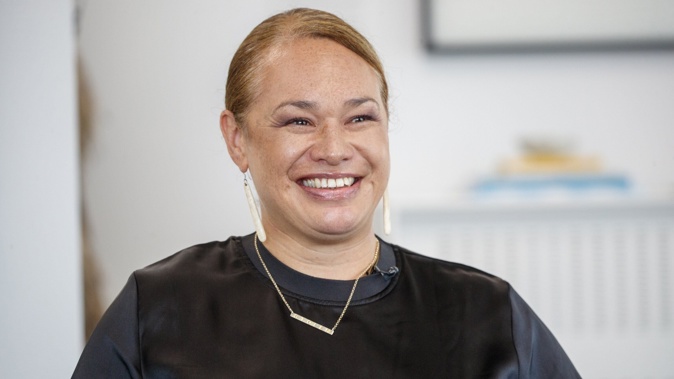PHOTO: Kelvin Davidson, CoreLogic Chief Property Economist
| The signs that the total stock of listings on the market has embarked on a firm upwards trend are becoming much clearer. To be fair, across NZ as a whole, total supply is still relatively tight. But some key areas, such as Dunedin and Wellington, are loosening quickly. With unemployment still low and motivated sellers few and far between, vendors may just sit tight for a while and not budge on price or even just withdraw their listing. However, more choice for purchasers can only mean reduced price pressures in due course, and a switch to a ‘buyer’s market’ later in 2022 is firmly on the cards – albeit they’ll have to work harder to get the finance in the first place. |
| For some time now, the tight supply of listings on the market (set up against strong demand fuelled by low mortgage rates and abundant credit availability) has been a factor pretty much right across the country, pushing up property values sharply. The lack of choice for buyers has created the ‘FOMO’ effect and it’s certainly put the power in the hands of property sellers.
The mechanics for this have been a reduced new flow of listings (mostly due to the various lockdowns), but continued high levels of achieved sales at the other end of the pipeline, which have combined to slowly dwindle away the available stock on the market. One important point to note is that new listings flows have fallen away during lockdowns and then recovered quickly – but only back to ‘normal’ levels, which haven’t really made up for the previous decline (see the first chart). However, over the past few months, a turning point for the total stock of listings on the market has become much clearer, as new flows have recovered and achieved sales have dipped. Indeed, since the recent trough, the total stock of listings has risen by almost 40%, and is now back up the highest level since March. To be fair, that’s still a low level. But the gap to where they were at the same time in previous years is nevertheless steadily closing (see the second chart overleaf). It’s conceivable that by the end the year, listings will have recovered to where they were (or even above) at the end of 2020. The turnaround for total listings isn’t a universal trend (yet), but is certainly very clear to see in some of the main centres – notably Dunedin and Wellington (and to a lesser extent in Hamilton), where listings are now back above the levels that prevailed at the same time in 2019 and 2020. There have already been signs of property values faltering a little in Dunedin in recent months, so more choice for buyers could see that evidence of softer price pressures become much clearer, as well as spreading to parts of Wellington too. See the third and fourth charts overleaf for more listings detail. But as noted, some areas are still tight. Take Queenstown for example, where although total listings have also begun to rise, they’re still pretty low compared to the past few years. As always, whichever point of the cycle we’re in, different drivers are at different levels depending on location. In some ways, it’s surprising that this shift for listings hasn’t happened sooner. After all, the theory would tell you that some investors will have been itching to sell some property and cash in their large capital gains in recent years, perhaps switching out to another asset class that they deem to be less hassle. Of course, the Brightline Test and a comparative lack of attractive alternatives may have prevented that happening to any great degree. Either way, the turning point does now look to have been reached and it wouldn’t be a surprise to see listings continue to increase into 2022, as new sellers come forward and sales activity itself tails off further. Of course, it may not necessarily become a ‘buyer’s market’ overnight, because of course some vendors may be stubborn in sticking to their price expectations, which if they aren’t met could just see listings sit for longer and/or be withdrawn altogether – especially since unemployment is low and few vendors are likely to be ‘motivated sellers’ at present. However, as mortgage rates rise and credit conditions tighten, some vendors may eventually just have to cave in and ‘meet the market’. Certainly, any official imposition of debt to income ratios may force some investors who are wanting to buy extra properties to sell more of their existing portfolio in order to stay under the cap – unless of course they look at new-builds, which may well have favourable treatment under any DTI system. Overall, in 2022 we may well see a ‘buyer’s market’ for the first time in a few years. To be fair, it’s important to note that a reduction in vendors’ power may not necessarily equate to outright falls in house prices. But even so, although buyers will have to work pretty hard to get the finance in the first place, they have reasons to be optimistic about getting a ‘bargain’ next year. See graphs and charts attached here: December 2021 CoreLogic NZ Market Listings Pulse |
MOST POPULAR
 Woman horrified to find her home up for sale: WATCH
Woman horrified to find her home up for sale: WATCH Luxon unaware his $7m Remuera home increased in value by $2.3m over one year
Luxon unaware his $7m Remuera home increased in value by $2.3m over one year Prime Minister Jacinda Ardern is now a property millionaire
Prime Minister Jacinda Ardern is now a property millionaire Real estate agent’s hilarious ‘threesome’ newspaper ad goes viral
Real estate agent’s hilarious ‘threesome’ newspaper ad goes viral Abandoned land for sale
Abandoned land for sale ALERT: Major bank predicts when house prices will fall
ALERT: Major bank predicts when house prices will fall The full list of how many properties New Zealand MPs own
The full list of how many properties New Zealand MPs own New Zealand’s first Ikea store
New Zealand’s first Ikea store Scared Auckland residents beg Kāinga Ora to evict neighbour
Scared Auckland residents beg Kāinga Ora to evict neighbour Kiwis are not alone: Staggering cost of Aussie housing
Kiwis are not alone: Staggering cost of Aussie housing














